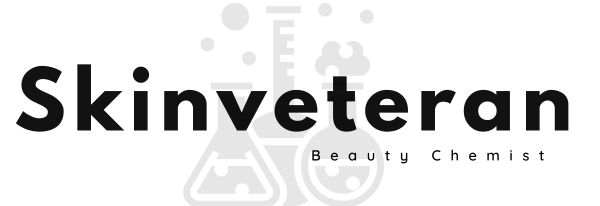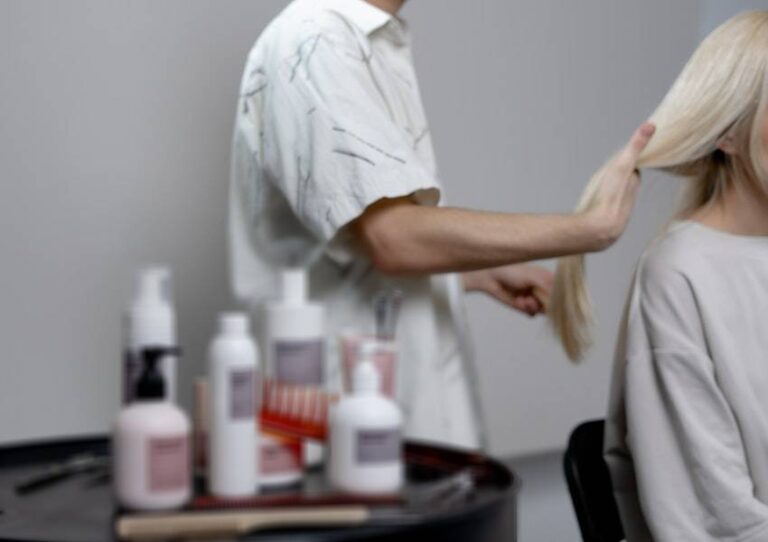Curl Cream Vs. Leave in Conditioner: Choose Wisely
If your goal is stunning, defined curls without the frizz and dryness, you’re likely caught in the Curl Cream vs. Leave-In Conditioner showdown. Don’t worry – I am here to help you navigate this puzzle and find your hair’s perfect match.
The goal of people using leave-in conditioner might not always be defining their curls. However, almost every customer who buys a curl cream wants their locks to look bouncy and moisturized.
Do curl cream and leave-in conditioner provide the same outcomes for your textured hair but are named differently?
That’s precisely what I’ll explain in this blog post based on my experience in the field.
It’s all about understanding their ingredients and learning to use them separately or together for the ultimate definition of your curls.
So, if you’re hunting for curls that’ll make heads turn, stick around. I’ll be examining the main differences between curl cream and leave-in conditioner.
You will discover whether to use one or the other or even mix both to define curls and moisturize your hair.
How Curl Cream and Leave-in Conditioner Are Different?
Before jumping into the precise difference based on their function and formulation, you should know the basic chemistry of curl cream and leave-in conditioner.
What is a Curl Cream?
If you are someone with straight and sleek hair, a curl cream is not for you. This hair-styling product is specifically formulated to enhance the look and definition of curly and textured locks.
A curl cream is made to help control frizz and dryness by adding essential oils, humectants, and conditioning ingredients. It also contains polymers, like acrylates, that help your curls stay in place and look defined.
The specific formulation for a curl cream usually varies between different brands. But, the typical ingredients are the same.
A good curl cream or primer contains emollients and oils (shea butter, coconut oil), humectants like glycerin, thickeners, and emulsifiers like cetearyl alcohol, styling polymers, fragrance, and preservatives.
So, if you have loose or tight curls on your hair that appear dry and messy, curl cream can help you pull off excellent, moisturized, bouncy locks.
What is a Leave-in Conditioner?
The term “leave-in” seems straightforward. A leave-in conditioner is a post-wash treatment you don’t rinse out. Whether you have straight hair or curly and thick locks, you can use this haircare product.
A lot of people confuse curl cream and leave-in conditioner for their function. If you look at the formulation of both, it is typically almost the same except for a few ingredients.
Like a curl cream, a good leave-in conditioner contains essential oils, humectants, emollients, and conditioning agents. However, it has a few extra added items like peptides and vitamins.
The key distinction between curl cream and leave-in conditioner lies in the presence of styling polymers, such as acrylates. These polymers transform curl cream into a hair styling product, while leave-in conditioner remains primarily a haircare product.
Curl Cream Vs. Leave-in Conditioner: 3 Major Differences
You reach for the curl cream, then pause. Wasn’t a leave-in conditioner supposed to define your curls? Understanding the unique purposes of each product is vital for your curly hair success.
Further down, based on their fundamental differences, I have compared curl cream vs. leave-in conditioned. It will help you decide which product to employ for what specific hair goal!
Difference 1: The Core Function of Each Product
It is a common perception that a leave-in conditioner defines the curls just as a curl cream. But it is not valid!
Curl cream and leave-in conditioner serve different objectives for your curly hair.
The purpose of curl cream is to define and hold curls. It shapes and sets your curl pattern.
Leave-in conditioner is meant to soften, detangle, and hydrate hair after washing. It preps hair for styling.
For some hair types, usually those with low porosity, a leave-in conditioner might help shape curls.
While both products moisturize, curl cream is about curl formation and hold. Leave-in is about priming the hair for definition.
Celebrity stylist Andre Walker says curl cream “enhances curls” while leave-in “softens and detangles.” Keeping the unique purposes of each product in mind helps you achieve your best curly locks!
Difference 2: The Degree of Hair Damage Control and Repair
As someone with hands-on experience formulating and experimenting with haircare products, I’ve learned that leave-in conditioner and curl cream are very different regarding hair damage control.
Leave-in conditioner is excellent for repairing and preventing damage. It penetrates the hair shaft to moisturize fragile strands deeply.
Leave-in helps smooth the cuticle and reduces breakage, split ends, and frizz. It’s like a nourishing treatment for your curls.
Curl cream, on the other hand, doesn’t repair damage the way a leave-in does.
Curl creams are styling products meant to define curls and provide hold. While moisturizing, they don’t penetrate and strengthen hair like a leave-in. The waxes and oils sit on the outside of strands.
So, while you can use curl cream to style your curls and get that perfect definition, you can’t rely on it as a haircare product.
Only a high-quality leave-in provides the intense hydration and repair your curly hair needs.
Difference 3: The Need Of Hair Gel
Curl creams offer an effective styling alternative to hair gel for those seeking defined, bouncy curls without dryness or frizz.
Unlike leave-in conditioners, which typically require an additional gel application to define curls fully, curl creams can provide ample definition and volume independently.
The key benefit is that curl creams eliminate the need for a second gel product that necessitates washing out.
You can achieve touchable, lively curls without weighing hair down or causing buildup with curl creams. They provide hydration and bounce while smoothing the cuticle and enhancing natural texture.
Just apply curl cream through your clean, wet hair and let air dry or diffuse. The result is soft, refreshed curls with no crispy gel residue.
Can You Use Leave-in Conditioner Instead of the Curl Cream?
Being someone who writes about hair perms and curly locks, I often get questions about using leave-in conditioner versus curl cream. While both hydrate curls, they serve very different purposes. You can’t use one instead of the other and expect the same results.
As I mentioned, curl creams are formulated to hold and enhance curl formation. The thicker texture shapes and sets your curl pattern.
On the flip side, leave-in conditioner is meant to detangle and deeply nourish your hair softly. Curl cream sits on the outside of strands and doesn’t penetrate to repair damage.
So, it would be unwise to buy a leave-in conditioner, thinking it will do the curl cream job along with its own thing.
That said, some leave-ins advertise curl-enhancing properties. Opt for one of these if you want to skip a separate curl cream.
Should You Use Curl Cream and Leave-in Conditioner Together?
If you already use curl cream or leave-in conditioner separately, how will your curly hair look when you apply them together?
When it comes to using curl cream and leave-in conditioner, there are specific scenarios where layering both products works well and times when just one or the other is better.
If you have high porosity hair that absorbs moisture quickly, using a leave-in and curl cream together provides multiple hydration layers—the leave-in nourishes and primes, while the curl cream seals in moisture.
However, using both products may make fine or greasy hair easily weighed down. In this case, it is better to use either one of these products.
Consider your curl type, hair texture, and porosity when deciding whether layering leave-in and curl cream is beneficial or if one product will suffice. Assess your hair’s needs and customize your routine to target those specifically for your best curls.
Wrapping Up
Though both hydrate, curl cream defines while leave-in conditions. Layering both nourishes curls and enhances style in special cases. Keeping their unique roles in mind lets you customize your routine for fabulously defined, touchably soft locks.








great post.Never knew this, thanks for letting me know.